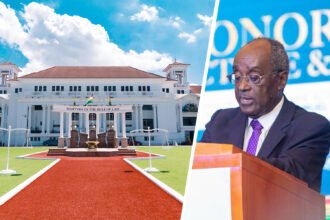
High Court, Accra · [1973] 2 GLR 216 · 21 December 1972
Introduction:
This case concerns a divorce petition involving allegations of adultery and desertion, decided under the Matrimonial Causes Act, 1971.
Facts:
Elizabeth Adjetey (Petitioner) filed for divorce from her husband, Timothy A. Adjetey (Respondent), but abandoned the petition. The respondent then pursued a cross-petition, citing adultery and desertion. The couple, married in London in 1966, separated shortly after moving to Ghana.
On the day they were to relocate together from Kanda to the respondent’s new home at Teshie, the petitioner left separately and never arrived. After disappearing for several months and reappearing briefly, she vanished again.
The respondent traced her to the home of T.D. Baffoe, where she was found early in the morning, partially undressed and preparing breakfast. The husband also observed the petitioner frequently in Baffoe’s company, including on overnight trips. The court inferred adultery based on circumstantial evidence of both opportunity and disposition. A separate claim of adultery with another man, David Larbie, was dismissed for lack of corroborative evidence.
Holding:
The court found that the petitioner had committed adultery and deserted the matrimonial home, and that the marriage had broken down beyond reconciliation under section 2(3) of the Matrimonial Causes Act, 1971. The court granted the divorce and awarded ₵600 in damages and ₵400 in costs against co-respondent T.D. Baffoe.
Implications of the Decision:
This case clarifies the standard of proof for adultery in divorce proceedings. It affirms that direct evidence is not required, and that the court may infer adultery from circumstantial evidence that demonstrates a strong likelihood of misconduct. The judgment also confirms that desertion coupled with morally questionable behaviour can support a decree of dissolution.
Significant Quote:
“Adultery must be proved to the satisfaction of the court and even though the evidence need not reach certainty as required in criminal proceedings it must carry a high degree of probability.Direct evidence of adultery is rare. In nearly every case the fact of adultery is inferred from circumstances which by fair and necessary inference lead to that conclusion. There must be proof of disposition and opportunity for committing adultery; but the conjunction of strong inclination with evidence of opportunity does not lead to an irrebuttable presumption that adultery has been committed; and likewise the Court is not bound to infer adultery from evidence of opportunity alone.”- Sarkodee J (citing Halsbury’s Laws of England, 3rd ed.)
Commentary/Insight:
The decisions make the proof of the fact of adultery more flexible as it allows for the use of circumstantial evidence. That is, pieces of evidence that irresistibly points to the single conclusion that there has been a voluntary sexual intercourse between a married person with a person other than his or spouse.
To reach this threshold, the circumstantial evidence led in proof of adultery should establish both “disposition” (suggestive behaviour or relationship) and “opportunity” (circumstances conducive to adultery). The Honorable Court however cautioned that these inferences must be a “fair and necessary” to ensure that courts do not hastily dismantle marriages based on suspicion alone.
This standard remains a guiding principle in Ghanaian family law as it balances the need to protect the sanctity of marriage against the realities of proving its breakdown by reason of adultery.











